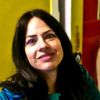You know the Fall season is literally around the corner when your in-box is jammed with press releases, many arriving as early as late July. Considering the art world in NYC takes less and less time off during the summer, the lead-up to September becomes a tsunami of openings and events to keep track of. Or at least thats how I feel, especially with SVA's Fall semester starting right after Labor Day. But what's timely isn't always what matters.
So for round two of my Alternative Models series, I've selected three organizations/projects founded or led by art world folks who are not only highly respected for their professional reputations, but for being some of the nicest folks around. That may sound namby-pamby, but the fact is after 20 years in this town, most of them entangled in some degree or another with the art world, I've found true sincerity to be pretty rare. People play nice, sure, but that doesn't mean they really are. And this includes the non-profit realm as much as it does the commercial. The competitive blood-thirsty drive to succeed that seems a requisite for making it in this town infects just about everyone (so too the "fake it 'til you make it" mantra makes frauds of us all).
Lets just say that most careerists I know don't really give a shit about being a good human being. They don't have time for it. This has always bothered me, so the folks collected here represent -- both through what they do, and how they do it -- an alternative model to this opportunistic paradigm. Now this doesn't mean they were selected simply for being sincere because, well, I'm not that nice, ha! In fact I admire each for the substance of their programming as well as for how they conduct themselves, and one feeds the other, IMHO. This is my point: intentions and motivations matter.
Brief Contributor Bios are followed by the same 3 questions used in the first round.
Mari Spirito is the Founding Director of Protocinema, presenting transnational-nomadic exhibitions in New York and Istanbul; a nonprofit with a hands-on Education Program, since 2011. Last month Spirito collaborated on a Research Project titled: Asar-ı Atika/ Ancient Works with Övül Durmusoğlu, Rossella Biscotti and Akram Zaatari originating at the Museum of Anatolian Civilizations, Ankara. Spirito is a consultant for Art Basel's Talks Program, 2013. Prior to Protocinema, Spirito was Director of 303 Gallery, New York; and is on the boards of Participant Inc., New York; New Art Dealers Alliance, New York; and Collectorspace, Istanbul.
Nelson Santos is the Executive Director of Visual AIDS, a non-profit arts organization that promotes AIDS awareness through the visual arts and assist artists living with HIV. Since joining Visual AIDS in August 2000, he has worked with over 250 artists and curators on AIDS awareness projects, and organized over 30 exhibitions and film screenings nationwide, including New York, Miami, Washington DC, and Toronto, Canada. He edited the publications Robert Blanchon (2006) and NOT OVER: 25 Years of Visual AIDS (2013). Santos is also an artist currently living in Brooklyn.
The Artist of the Month Club is an unique edition-by subscription project created by Risa Needleman and Benjamin Tischer, co-owners of INVISIBLE-EXPORTS. The project has been praised in New York Times, New York Magazine, Huffington Post, amongst others.
JUH: What motivated you to start your alternative enterprise, and how do you feel it relates to traditional counterparts -- on the internet and otherwise?
MS: I started visiting Istanbul from New York in 2007. Because I have been working in the art field for many years, a field that, like many others, has become primarily mobile, I became mobile and responded to these shifts, wondering how this might effect how art is created, exhibited, acquired and understood. This eventually lead to the formation of Protocinema in 2011, a non-profit that organizes about four site-specific exhibitions a year, two in Istanbul and two in New York. The creation of transnational, nomadic art exhibitions in both cities, which share a similar sense of scale and energy that inspire me, reflected my desire to have my work to be nimble, responsive and in sync with my life -- instead of my life being in sync with my work. The name Protocinema, btw, refers to Cave of Forgotten Dreams, 2010, a 3-D documentary film by Werner Herzog, who describes cave paintings as a "proto-cinema" style of representation capturing figures moving through space and time." Traditional counterparts might include ArtAngel, London; Art Parcours, part of Art Basel; Public Art Fund or aspects of Inhotim in Minas Gerais, Brazil and don't forget what Tom Eccles did with Public Art Fund in New York in the late 1990s.
NS: Visual AIDS was founded in 1988, in the height of the AIDS crisis, as one of the first national initiatives to record the impact of the AIDS pandemic on the artistic community. It brought together people in the Arts and AIDS communities through international projects, like Day With(out) Art, and the creation of the red ribbon. Visual AIDS continues to use art to fight AIDS by producing art projects, supporting artists living with HIV, and preserving a history of artwork by those we lost to AIDS. To this day, Visual AIDS is the only contemporary arts organization fully committed to provoking dialogue around HIV prevention and AIDS awareness. I joined Visual AIDS in 2000, and was named Executive Director in 2012.
BT: The Artist of the Month Club (AMC) was started at the same time as INVISIBLE-EXPORTS, as a strategy to introduce chance into the act of collecting. Having worked in galleries, Risa and I realized that living with work often allowed for a deeper appreciation of it. Love is not always at first sight. So we devised a new model, where you sign up for a year, and each month an unknown artwork is sent to you in the mail each chosen by a different curator, all of high caliber. (You can also buy previous years as portfolios, but that is not nearly as fun).
AMC was also meant to serve as a gateway drug for deeper collecting, a way for younger collectors to amass a number of quality works to further build upon. (Oddly, it does not work this way. Most of the subscribers are adept collectors who recognize the value). Another side benefit was that it allows us to give back to curators -- we were able to ask them who or what they were excited about rather than merely sharing our artists' current endeavors.
JUH: How does your recent/upcoming project/exhibition reflect your mission/interests?
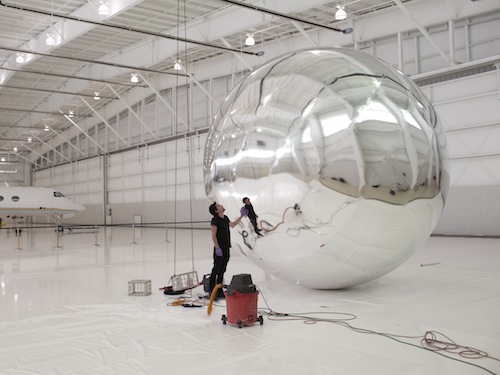
Trevor Paglen, Prototype for a Nonfunctional Satellite (Design 4; Build 3), 2013, sculpture in progress. Courtesy: Protocinema, Istanbul; Artpace, San Antonio, TX; Metro Pictures, New York; Altman Siegel Gallery, San Francisco; Galerie Thomas Zander, Cologne
MS: Long-standing personal interests with issues related to behavior modification, perception and belief systems have led me to work with artists whose work also investigate these areas. Trevor Paglen will exhibit his new sculpture, "Prototype for a Nonfunctional Satellite (Design 4; Build 3)", 2013, which he describes as "a spacecraft that has no commercial or military 'function' -- and is meant to be a purely aesthetic object. The idea behind them is to do something akin to art for art's sake but instead it's aerospace engineering for aerospace engineering's sake." By exhibiting Paglen's work in a garage in the Dolapdere/Kurtuluş neighborhood of Istanbul, which consists primarily of car mechanics and residents,a very ordinary, everyday space, we hope to open up a conversation about how information is, or is not, distributed, the means by which it is or is not distributed, as well as the function of art and how art communicates-if at all.
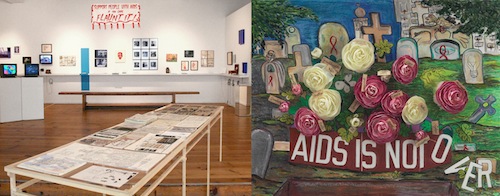
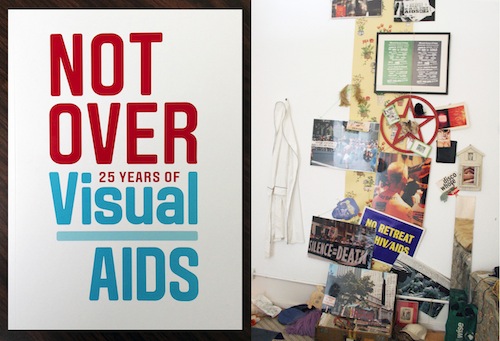
"NOT OVER: 25 Years of Visual AIDS", exhibition at La MaMa Galleria (top left); artwork by Edith Alvarez, AIDS is Not Over, 2012 (top right); catalog (bottom left); installation by Jack Waters and Peter Cramer, Short Memory/No History, 2013 (bottom right), Courtesy: Visual Aids
NS: For 25 years Visual AIDS has been working with artists, curators, galleries and art institutions in response to HIV/AIDS. Our recent summer exhibitions and public programing series, including "NOT OVER: 25 Years of Visual AIDS" hosted at La MaMa Galleria looked at the deep cultural history of the epidemic, along with contemporary realities of where the nexus of art, AIDS and activism is now and where it is going. Curated by Kris Nuzzi and Sur Rodney (Sur), they link artists of a generation born after 1970 to an earlier generation of artists that were active in the 1980s. By creating these layered connections and presenting artwork by both historical and contemporary artists, the exhibition reflected Visual AIDS mission to provoke dialogue and preserve history. Visual AIDS also presented the exhibitions "Not only this, but 'New language beckons us," curated by Andrew Blackley at the Fales Library and Special Collections, NYU, and "House in Vermont", curated by Shannon Michael Cane at Printed Matter, NYC. We also produced 12 public programs and a book reflecting on our history also titled "NOT OVER."
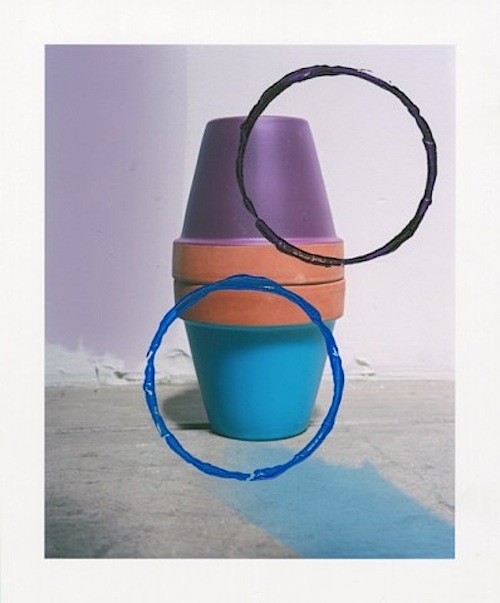
Sam Falls, Untitled (Pots, purple and aqua), Curated by Rebecca Morse, acrylic on archival pigment print, 11 x 13.25 inches, 50 unique works + 10 unique APs,Courtesy: INVISIBLE-EXPORTS
BT: AMC is a surprise. Even to us. We play along with everyone else, instigating but never directing curators' or artists' choices. We are extremely specific regarding exhibitions in the gallery, so they play nicely against one another. And it allows us to do projects with artists represented by other galleries. This year has included Sam Falls from Metro Pictures, Charles Harlan from JTT.
JUH: How does your org distinguish itself from others: what does it provide/offer that makes it most valuable in your estimation?
MS: Protocinema is both unique and valuable in that it presents international artists in both the US and Turkey, developing a dialogue between the two cities that a cross platform, bio-diversity model of sorts, in the arts. I work with artists who do not have a high visibility in the city Protocinema exhibits them in. So, regardless if the artist is established, like Dan Graham or Dominique Gonzalez-Foerster, or a bit younger, like Can Altay, Brian O'Connell or Jacob Kassay, I'd prefer to show them to an audience that has not already seen one-person gallery or museum shows of that artist. For example, when Protocinema collaborated with Itinerant/Rose Lord to show the work of Mario Garcia Torres, Ahmet Öğüt and Gerard Byrne, none of those artist had previous one-person exhibitions in New York. We hope to create a win/win scenario. The next exhibition in NY will be a three-channel video "Ashura" by Köken Ergun in November.
NS: Recently, there has been renewed cultural interest about AIDS in the 1980s & 90s, with show such as "AIDS in New York: the First Five Years" at New York Historical Society, "I, YOU, WE" at the Whitney Museum, Rosalind Solomon's "Portraits in the Time of AIDS, 1988" at Bruce Silverstein gallery, and even the "1993" show at the New Museum. While many of those exhibitions presented some very powerful work from the past, what makes Visual AIDS and our exhibitions and programs distinctly different is that we know that HIV/AIDS is still here, it is not "history," but an ongoing reality. We have generations that only know a world with HIV, and even as we wish for future generations to be free of AIDS, we continue to use art to raise awareness, start conversations and create change, because AIDS is NOT OVER.
BT: Artist of the Month Club is a game of sorts. A leap of faith with potentially huge rewards. Introduction to artists that you might have overlooked, and the chance to own unique works for well below what collecting this work would normally cost. Living with work is such a luxury. If there is another project that resembles this, I have yet to see it. And you cannot beat the price. Wink.
